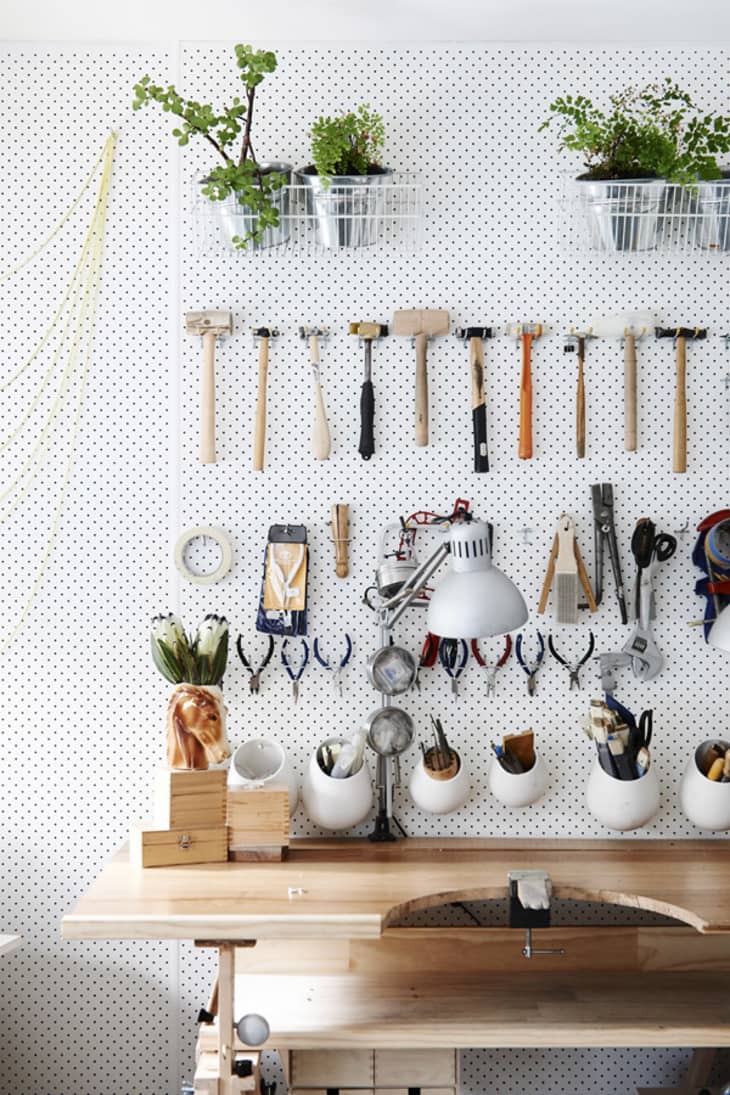The 8 Tools Every DIYer Should Always Have on Hand

In college I had a ‘beginner’s toolbox’ with basics like a hammer, level, tape measure, and mini cordless drill. This little baby drill became the bane of my existence. It never held a charge, wasn’t powerful enough for even self-tapping screws, and made the highest pitched whine. As soon as I was able to, I invested in a cordless power drill and learned an important lesson. Get the good stuff.
After 4 years of design school and 2 years as a DIY blogger, my favorite drill would have to be the Dewalt 18-volt, cordless, compact drill and driver set. This set has a 4.7/5 star with over 700 reviews! It’s on the lighter side of power drills and honestly this whole post could be a love poem to this set, but I’ll let you hop over to the reviews to see for yourself.
Ever come across a DIY that just lists ‘sand’ as a step? Know your grits to avoid beginner DIY frustration or to achieve DIY mastery! Have a collection of rough, medium, and fine grits on hand for everything from smoothing small polymer pieces to refinishing a dining set. Some people recommend having separate wet and dry sandpaper, but I find that the two-fer kind works just fine for general purpose DIY.
Speaking of sanding, get a proper respirator mask. Small sanding particles will mess up your lungs and a mask is such a low cost prevention. Check out these masks and make sure you get the mask that corresponds to your project.
Paper tape, such as masking or washi tape is useful for almost every DIY. Paper tape adheres to a variety of surfaces but also comes off easily. I’ve used it on fabric when I couldn’t find fabric pins, cutout nail design stencils, and consistently use the little rolls as styling props.
I love Scotch plain old crepe masking tape for general use, Scotch Blue for large paint jobs (though Frog has gotten great reviews as well), and Mochi Things for all tape small and cute.
A workhorse that is easily overlooked, a good metal ruler with a non-slip foam or cork backing will last you a lifetime. You can get razor sharp cuts and creases without ever having to worry about the slip of a blade ruining the edge. Just be sure to clean off any ink or paint after use as they can cause small erosions.
Bless the genius who invented the ratcheting screwdriver. Spend the extra money up front and never fight a stubborn screw again.
Scissors! Like the tape, sandpaper, or respirator masks, it’s important to use the right tool for the right job. Use fabric scissors to keep fabric from fraying, metal shears for shaping stamping blanks, and a pair of general craft scissors for pretty much anything else. Both Target‘s and IKEA’s original TROJKA cheap kitchen shears are solid options for general craft use!
The key to anything is to document everything. Have a dedicated DIY notebook for quick measurement notes or late night ideas. Field Notes caters to the idea of the modern field notebook and has my favorite extra notebook, Expedition, that is waterproof, fire resistant, and microwave proof. Hey, you never know how crazy your crafting might get.
What are some of your go-to tools for DIY crafts and projects?